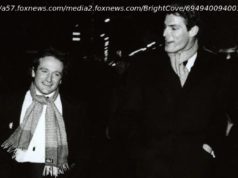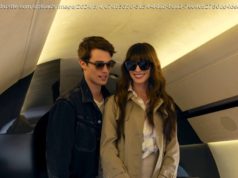New Golden Age of Television Casts Spotlight on the Work of Artisans
When women in striking red cloaks and white bonnets reminiscent of the costumes from “The Handmaid’s Tale” started showing up at protests for women’s rights this year, it seemed like an odd marketing strategy for Hulu.
But this was no PR stunt: the outfits, worn by enslaved women in the drama and created by Emmy nominees Ane Crabtree (costume designer) and Sheena Wichary (costume supervisor) leaped from the small to the big screen thanks to viewers who saw a connection between the craft and reality, and knew the outfits spoke louder than chants or signs.
Not so long ago, the notion that a below-the-line craft could be part of viewers’ conversations was nearly unheard of. But production values have become so spectacular on TV that audiences have started taking note of the heretofore almost sub-rosa existence of categories like cinematography, production design, costume design, hair, makeup and sound, and made them a vital part of any awards season conversation.
“We have the internet working for us now, ” says UCLA professor and former Costume Designers Guild president Deborah Nadoolman Landis, referring to crafts across the board. “Studios are no longer controlling information about the little people working behind the scenes. We’ re starting to build our own value.”
“Handmaid’s Tale” captured the public interest early on, with the red cloaks standing out as one of the few bright points in the otherwise dark-paletted, dystopic show in which nearly all other costumes have an intentionally plain, retro feel.
Other nominated costumes had different uses. In Netflix’s “House of Cards, ” which picked up its first costume nominations for Johanna Argan and Kemal Harris this year, the subtle use of primary and black-and-white colors in outfits were designed to develop character, particularly with the president of the United States (Robin Wright) unafraid to appear sensual while still projecting power.
On ABC’s “ Dancing With the Stars, ” on the other hand, costumes are always part of the buzz; nominees Daniela Gschwendtner and Steven Lee and team didn’ t have to be too subtle with their spooky Halloween episode costumes — they just had to be able to create them in a very short time span and make them flexible enough to endure vigorous dance moves.
Where costumes cannot venture, visual effects have taken a great leap, as on HBO’s “Westworld, ” which earned nominations for supervisor Jay Worth and his team for the detailed, realistic inner workings of robot “hosts, ” aided by animation from visual effects studio Important Looking Pirates. The seamless blend of futuristic computer creations with the Wild West made the show buzzworthy through its entire first season.
Alas, it competes with other visually stunning vfx series, including Starz’s “American Gods, ” whose first episode featured a Viking battle, a flame-eyed buffalo and a truly all-consuming sex scene; that series cast a wide net of effects from designer Kevin Tod Haug and his team. On fellow Starz show, “Black Sails, ” Erik Henry and team iterated more than 30,000 asset frames each episode to fill an underwater graveyard with 18th century pirate mayhem.
Hair and makeup are their own kinds of special effects, and the ones used to transform actors into real-life people often get parsed closely. National Geographic’s “Genius” had to walk Albert Einstein’s distinctive hairstyle through the decades, ending up with his classic “halo” of fluffed gray hair, and earned nominations for Tash Lees and team. FX’s “Feud: Bette and Joan” had to recreate legends Bette Davis and Joan Crawford in addition to their film characters, including “What Ever Happened to Baby Jane’s” outlandish white-face pancake, which earned Eryn Krueger Mekash and team their nominations.
But it was NBC’s “ Saturday Night Live ” that dove into modern recreations of our current president and his former communications director Sean Spicer, transforming Alec Baldwin and Melissa McCarthy respectively into believable, spot-on caricatures of the politicos. “ SNL ” was so proud of the effect head makeup artist and nominee Louie Zakarian and team created that the show filmed “Spicer” literally rolling down the streets of Manhattan behind his podium.
Production design took viewers into private, vaunted enclaves this season, giving insight into the worlds of Buckingham Palace (Netflix’s “The Crown”) and Vatican City (HBO’s “The Young Pope”) . Each required meticulous recreation and creative imagination, and earned nominations for their designers Martin Childs and Ludovica Ferrario, respectively. Their challenges were similar: use public and hitherto-rarely seen private areas to mirror relationships and reality among their elevated protagonists, and each made audiences feel like they were getting a personal glimpse into a secret world.
More quotidian existences still ring true for audiences, though; the science and science-fiction details embedded in the nerdery of CBS’ “The Big Bang Theory” helped earn John Shaffner his nomination, while HBO’s “Silicon Valley’s” Richard Toyon called upon actual real-world tech companies to participate in one episode that earned him a nomination (“Hooli-Con”) – companies that provided their own booth set-ups, merchandise and staff.
But it was on Netflix’s “Stranger Things” that production and set design perhaps shone the strongest for Gen X viewers, with everything from banana-seat bikes to a wood-paneled basement that perfectly evoked 1980s suburbia, earning Chris Trujillo a nomination.
With other series, it’s about fashioning a unique, big-picture look to stand out with audiences. Few shows have ever used jarring, off-kilter camera angles and dim lighting to develop character and story better than USA Network’s “Mr. Robot, ” which earned DP Tod Campbell a nom. Similarly, FX’s “Fargo’s” Coen brothers-inspired wide, patient shots of snowy, barren landscapes (shot by nominee Dana Gonzales) makes the series instant recognizable and artistic.
That said, not every beautiful shot needs to be meticulously planned; CBS’ “The Amazing Race’s” around-the-world cinematography is always stunning, always on-the-fly and never the same thing twice, thanks to nominee Peter Rieveschl and team.
Yet visuals are not the only quality that preoccupies audiences; clever and extensive use of sound and intentional music draw fans these days, too. Partly this is savvy marketing, online and off: the CW’s “Crazy Ex-Girlfriend, ” whose darkly bouncy tunes earned a music and lyrics nomination for Adam Schlesinger, star Rachel Bloom and Jack Dolgen, has YouTube clips of tunes from the show with more than 1 million views, and offered official sheet music online this year.






